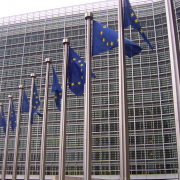A new European project has been launched to help tackle the increased threat to wheat crops from invasive races of rust. In particular, RustWatch, coordinated by ENDURE partner Aarhus University, will provide a new early warning system to boost preparedness and resilience to new invasive wheat rust races.
The Aarhus University website reports: “Acting with due diligence is sensible in many situations, including prevention of fungal diseases in wheat. With regard to rust diseases in wheat, a rapid and precise identification of emerging races is crucial, followed by investigating the impact of such races on varieties of wheat that are grown in Europe.”
The project has brought together 24 partners from 13 European countries, plus the University of Agriculture in Peshawar, Pakistan, where European wheat varieties and breeding material will be tested for rust resistance in the Himalayas, where the yellow rust pathogen has its centre of genetic diversity. These partners include ENDURE members from Denmark (Aarhus University and SEGES), France (INRA and ACTA member Arvalis), Germany (Julius Kühn Institute) and Poland (IHAR).
“It is urgent to be at the forefront with rapid and precise identification of new races of particularly yellow (stripe) rust and black (stem) rust in wheat, which is Europe’s most important crop,” coordinator Mogens Støvring Hovmøller told the Aarhus University website. “In 2016, Europe experienced the most severe epidemics of wheat stem rust for more than 50 years, and the pre-existing population of wheat yellow rust has recently been replaced by invasive races of non-European origin. This situation poses great challenges for wheat farmers because rust resistant wheat varieties may turn susceptible within a single or a few years.”
The website reports that the project will develop a warning system for all three types of rust found in wheat (yellow, black and brown) to ensure the agricultural sector is prepared and resilient to new wheat rust races. Central to the warning system will be the Global Rust Reference Centre at Aarhus University’s Flakkebjerg campus, which will compare all the merging rust races recorded in Europe with races from other global locations.
The warning system will be tested in five regions: Denmark, Great Britain, Italy, Spain and Switzerland. “These case studies will contribute to development and validation of the early warning systems, and disclose potential obstacles that may restrict the implementation of these. The case studies will also make it possible to investigate the risk of establishment of new invasive rust races on a regional level and propose IPM-based rust prevention and control that is adapted to the agronomic and environmental conditions in the region in question,” reports Aarhus University.
Source: www.agropages.com




